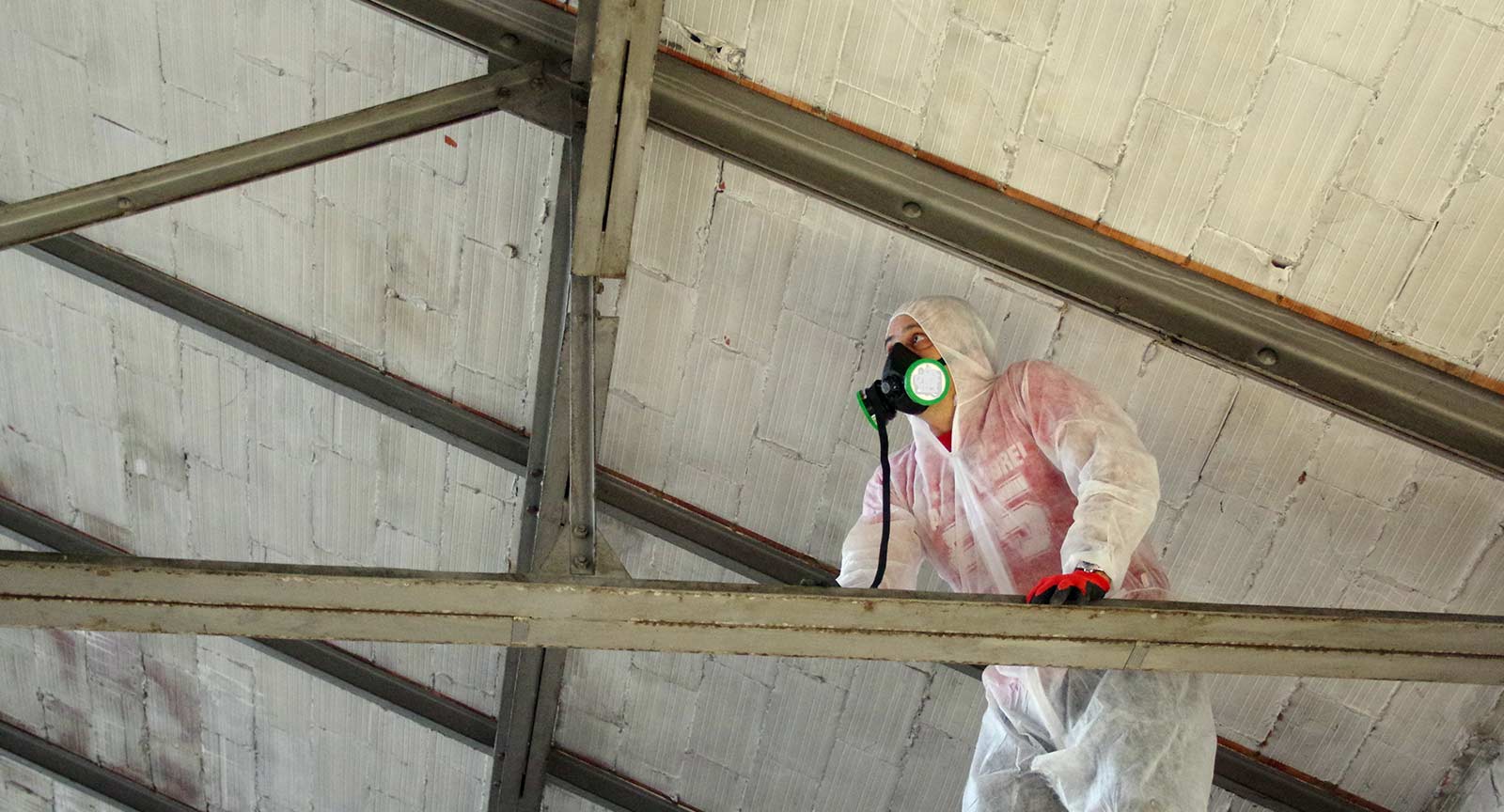ICCF : modern archaeology
In 2019, nearly 70,000 fire appraisals were processed, a staggering figure where the intervention of a fire sapiteur in support of the appraisals.
A fire is never an ordinary loss. However large or small, it leaves undeniable traces, both tangible and psychological, for the third-party victim. In an industrial setting, a fire can penalize an entire company. The end result is a business at a standstill and thousands or even millions of euros of loss. There are estimated to be over 70,000 fire loss adjustments in the Stelliant Group in the space of a year. A staggering number of cases in which the technical sophistication required to establish the cause requires the services of a fire specialist adviser to assist with the loss adjustment.
What is their job? Their job is to bring together a diverse range of disciplines and physical, chemical and mathematical models to produce a map of the facts. What element was the source of combustion? How did the gases escape? How fast did the smoke move? The answers to these questions are all key factors to understand the source of a fire. At the crossroads of technical, scientific and legal analyses, let’s take a look at the role of the fire specialist adviser.
For the common good
In addition to providing technical assistance to the principal, the investigation of the causes and circumstances of fires is fed internally by information gathered for all the cases handled and the volume of loss appraisal. Once correlated, this data aggregation intended for the insurer allows trends to be identified with regard to the loss record of any particular equipment. Highlighting anomalies in this way helps both businesses and insurance companies. On the one hand, manufacturers can anticipate serial claims. On the other hand, the insurer can adapt its offer.
There are many examples of this, but let’s look at a fairly recent one. Today lithium batteries are everywhere in our daily lives. Initially designed for aircraft, they are now in our laptops, smartphones, tablets and even our electric bikes. However, the democratisation of these batteries has resulted in a significant drop in production quality. They are a source of ignition in numerous cases, particularly when charging. Design or usage faults are nothing new for fire specialist advisers. The specialist adviser is someone who issues warnings in a continuous improvement approach. If the regulations are slow to change, the adviser sets up means to protect against the risk by advice and anticipation.
To push forward change in the discipline, the investigation of the causes and circumstances of fires needs to improve the exchange of information between the different specialists in the sector. No type of fire can be overlooked. Each one represents a particular interest in the search for a cause. A minor incident involves less destruction and the causes are easier to establish. However, these smaller cases are the principal contributors to feed their database. In these specific cases, the fire specialist adviser is called in by the insurer or a loss adjuster requiring a technical opinion on a one-time basis. For major high-stakes fires, the insurance company appoints a specialist in the search for causes directly to check that all the regulations have been complied with. Everyone benefits. Manufacturers, insurers and policyholders all benefit from this database via the fire specialist adviser. Understanding and assimilating the sources, environment and consequences of the ignition is a way of curbing some risks in the future.
Understanding the sources
The specialist adviser’s job is to understand the sources in order to support a scenario and thus piece together the chronology of events. It takes more than just a few minutes to find the answers. Based on a blank canvas, their method is based on collecting elements as they go along. It is essential to start within the first three or four days after the fire. Despite this, specialists in the investigation of the causes and circumstances of fires face a major problem as soon as they arrive: contamination of the site. This represents the main difficulty encountered during investigations. Areas are cleaned, stripped in some cases and rooms emptied of all traces. These are obstacles which are impossible to get around. To put it simply, the more the scene of the fire is modified, the more difficult it is to find where the fire started. However, these complexities are not an end in themselves. Fire specialist advisers have a wide range of skills and tools to successfully complete their damage survey.
To use a metaphor, investigating the causes and circumstances of fires is like reading a book in several languages. Many disciplines are used, from physics and chemistry to mathematics. How does electricity turn into a fire? How does wood or a metal structure react to flames? What colour changes occur in materials during a fire? How will plaster be damaged? To find the answers to all these questions and more, the fire specialist advisor divides up the zone and then digs layer by layer like an archaeologist. Our chronology is based on the debris collected and the different layers of damage, more commonly called stratification. In this game, tools provide real added value in understanding ignition. X-ray, 3D modelling, digital capture and reconstitution of real fire in a cell are all means available to use to better understand a fire and its nature.
It is clear that these fires are often electrical, namely, devices plugged into the electricity supply. Although a great many quality control operations are conducted on power stations in companies, this is not necessarily visible in private houses. The most common causes of fire are technological, domestic and also mechanical. However, this in no way masks the fact that the cause of fire is often human. Let’s imagine that the element which generated the fire was a washing machine. It is electric and therefore the source is electric. However, after looking for the cause, it becomes evident that a terminal has not been correctly tightened. This is a design fault for which the responsibility is human, even though accidental. Conversely, other fires are started on purpose, particularly in companies. Competitiveness or maliciousness can lead to a criminal act. Debt can lead to attempted insurance fraud. These are misfeasances which the insurer wants to clarify with its principal in light of the observations in the fire specialist adviser’s report, sometimes backed up by investigators. The case then takes a legal turn, both in civil and criminal cases.
Specialist adviser, a neutral position
Many cases are settled by amicable agreement out of court. The fire specialist adviser acts as an arbitrator in this procedure. Let’s consider an example. Two or more parties agree to entrust the case to a loss adjustment firm. The fire specialist adviser is substituted for the court appointed expert in this case. Objective and impartial, the specialist adviser deploys the means available to save time and act quickly. Arbitration is therefore a less costly, faster solution, which is something for customers to be satisfied about.
Conversely, when the legal clock starts to run, the insurer’s aim is to begin a civil liability action in favour of its customer. In case of compensation, the insurer knows the regulations and measures to be taken according to the specialist adviser’s report. The insurer’s criteria therefore change according to the loss record and the risk. Although the specialist adviser issues the public report used during examination of the case, they never initiate the action. They remain an investigator. Neutrality is essential. The specialist adviser operates as an external party, providing technical skills specific to the search for causes. All the specialist adviser’s observations are based on facts and not subjective interpretation. However, it is not rare for a fire specialist adviser to be called in to support a loss adjuster. For comparative appraisal meetings, the specialist adviser provides information for the case via photos, 3D scans or by transmitting experiments directly from the laboratory. Once in legal territory, fire investigation is no longer simply a case of the causes and circumstances of a fire. Between the defence, interjections between the parties, response times and elements added to the enquiry, some cases drag on for over ten or even fifteen years in some cases. The greater the sums involved, the slower the legal clock turns.
With over 60 to 80 cases a year, the sun is not yet going down on the job of the fire specialist adviser, but rather burning ever brighter. At the crossroads between numerous scientific disciplines and interprofessional relations, this specialist has tools and skills adapted to searching for causes both remotely and on the ground. Where some are oblivious, the specialist tries to attach an analytical and technical vision to the chronology of the facts. However, it would be naive to claim to have the monopoly of knowledge on the issue with so many different theories existing around the world. Like archaeologists, specialist advisers make credible, valid assumptions but without any absolute certainty. Whatever the question may be, they try to provide their customers with the most objective answers.
Christian OUERTAL, ICCF at INQUEST
Julien DAPREMONT, Fire Specialsit at INQUEST







